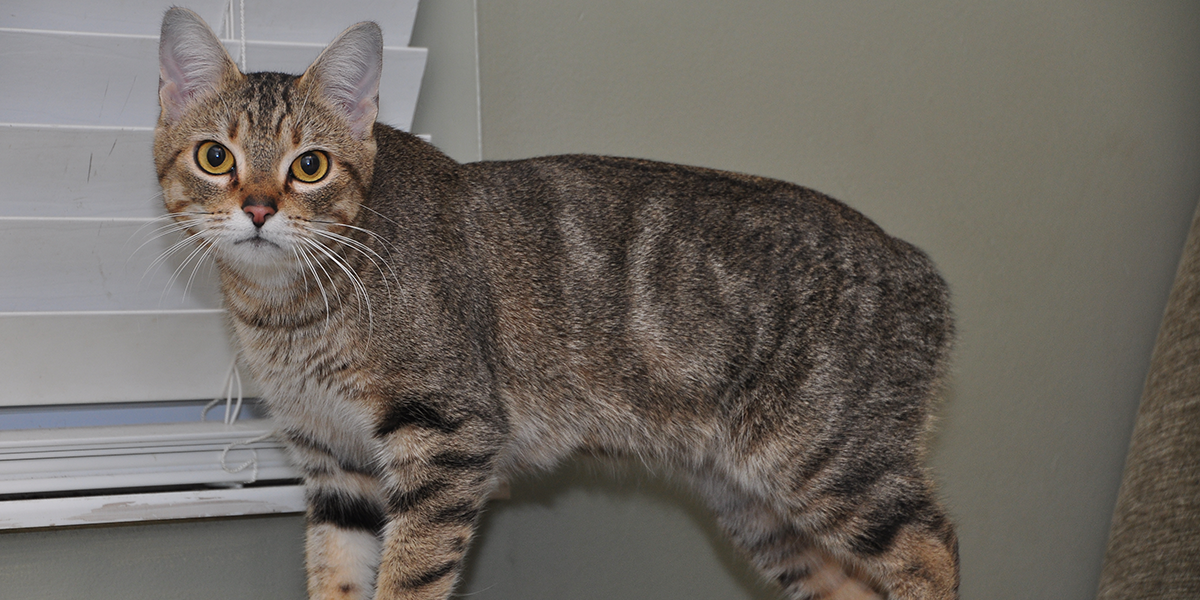The Manx breed of cat was developed on the Isle of Man in the UK, but the breed is defined by a mutation that shortens the tail. A variety of tail lengths are actually seen, from normal to taillessness, but it is tailless or extremely short-tailed cats that are characteristic of the breed.
The problem is that the mutation causing the loss (or shortening) of the tail affects not only the tail, but also the spine and spinal cord, and thus also the nerves. This results in a form of spina bifida – a developmental abnormality of the spine that can result in problems with control of urination and defecation, and sometimes also with control of the back legs (causing partial paralysis).
Inheritance of the defect
The gene responsible for the lack of tail is a dominant gene with a high penetrance. This means that only one copy of the defective gene is needed to produce the defect (in fact having two copies of the defective gene usually causes such severe problems that it will be lethal, causing death of kittens before they are born), but because it does not always ‘penetrate fully’ (ie, show its full effect), the tail is not always completely absent. Different tail lengths can therefore be seen in Manx cats and they carry different descriptions:
- ‘Dimple rumpy’ or ‘rumpy’ – no tail whatsoever
- ‘Riser’ or ‘rumpy riser’ – a bump, or rump of a tail – either just cartilage or a few vertebrae
- ‘Stumpy’ – a small partial tail (up to about 3cm)
- ‘Stubby’ – a short tail
- ‘Tailed’ or ‘longy’ – having approximately half-length to normal tail length
Even when a tail (or partial tail) is present, the vertebrae are abnormal (eg, fused). The likelihood of spina bifida and problems with urination, defecation and/or the back legs is directly related to how short the tail is. In addition, some Manx cats have been reported to develop severe and painful arthritis.
The likelihood of severe problems occurring can be reduced by avoiding breeding tailless cats with tailless cats, but in reality there is no justification for continuing to deliberately breed cats with a genetic mutation that can cause severe compromise to the quality of life, and even death.
The ethics of breeding tailless cats
Cats are extremely agile and use their tails as a means of balance to achieve this level of agility. In addition, cats use their tails as an important means of communication with other cats.
International Cat Care believes that to deliberately breed cats without tails (or with short or deformed tails), simply for human gratification, is unethical. This applies to Manx cats and also other breeds based on tail deformities. It has no benefit for the cat and is inevitably detrimental to the normal form and function of the cat. In severe cases, taillessness is also clearly associated with other spinal defects which can have major health consequences for the cat.
Thank you for visiting our website, we hope you have found our information useful.
All our advice is freely accessible to everyone, wherever you are in the world. However, as a charity, we need your support to enable us to keep delivering high quality and up to date information for everyone. Please consider making a contribution, big or small, to keep our content free, accurate and relevant.
Support International Cat Care from as little £3
Thank you.
Donate Now


